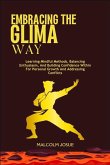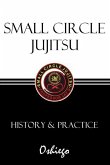For centuries, Irish stick fighting, known as bataireacht, played an important role in combat, self-defense, and cultural identity. This book explores its origins, techniques, symbolism, and evolution from clan warfare to a modern martial art. Origins and Evolution examines how early Irish warriors used the shillelagh in tribal conflicts, personal duels, and resistance against foreign rule. The influence of Law on structured combat, the adaptations required after the invasion, and the changes brought by the Rules and Laws all shaped the development of bataireacht. The tradition of dueling and honor codes ensured that stick fighting remained a respected practice in Irish society. Techniques and Training details how a fighter's grip, stance, and striking methods determined the outcome of combat. The importance of footwork and defensive maneuvers allowed fighters to evade attacks and counter with precision. Training was often passed down through secret lineages and private schools, preserving family techniques. The crafting of a shillelagh involved selecting, curing, and shaping the wood to create a durable weapon, a skill refined over generations. Social and Political Dimensions explores how bataireacht reflected community identity in rural Ireland, where faction fighting settled disputes and strengthened family ties. It became a tool of nationalism and resistance, especially when traditional weapons were Confiscated. The British government viewed stick fighting as a threat, leading to legal suppression, while its use in faction disputes created an association with crime. Despite efforts to erase it, the tradition was preserved through revival movements, ensuring that bataireacht remained part of Irish heritage. Symbolism and Ethical Frameworks discusses the warrior's ethos and honor codes, where skill, fairness, and discipline were valued over brute force. Fighting rituals, folklore, and storytelling traditions passed down the techniques and lessons of past warriors. Literature, poetry, and art depicted the shillelagh as a symbol of Irish defiance and strength. The moral philosophy behind combat emphasized controlled violence and protecting others, making bataireacht more than just a method of fighting. Modern Interpretations and Contemporary Relevance examines how bataireacht is now practiced as a martial art, a means of cultural preservation, and even a self-defense system. The influence of Irish emigration spread its techniques worldwide, leading to renewed interest in its history and applications. Though no longer needed for survival, the principles of discipline, respect, and strategic combat continue to make it relevant today. This book presents a complete study of bataireacht, showing how a simple wooden stick became a weapon, a tradition, and a lasting symbol of Irish resilience.
Hinweis: Dieser Artikel kann nur an eine deutsche Lieferadresse ausgeliefert werden.
Hinweis: Dieser Artikel kann nur an eine deutsche Lieferadresse ausgeliefert werden.








